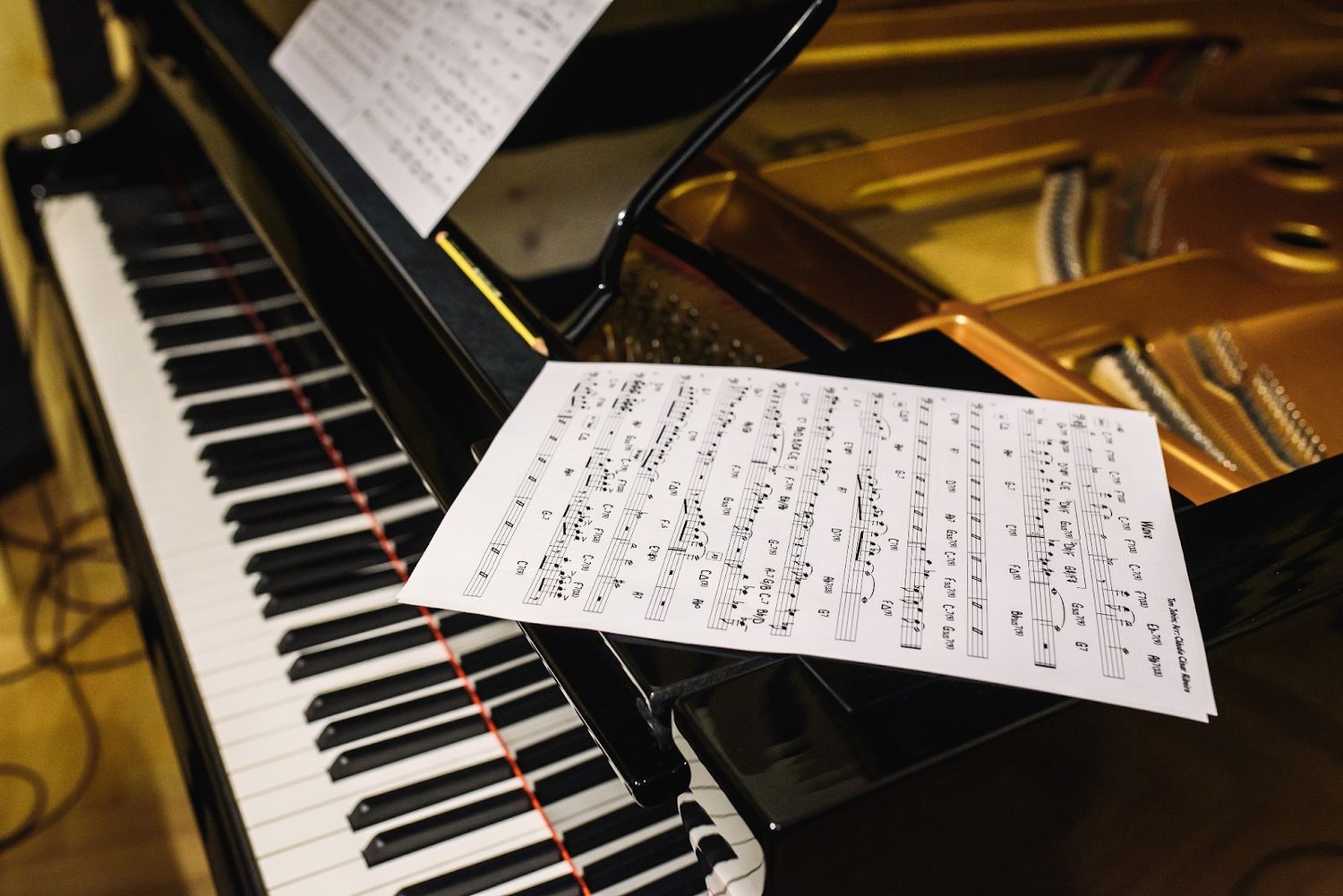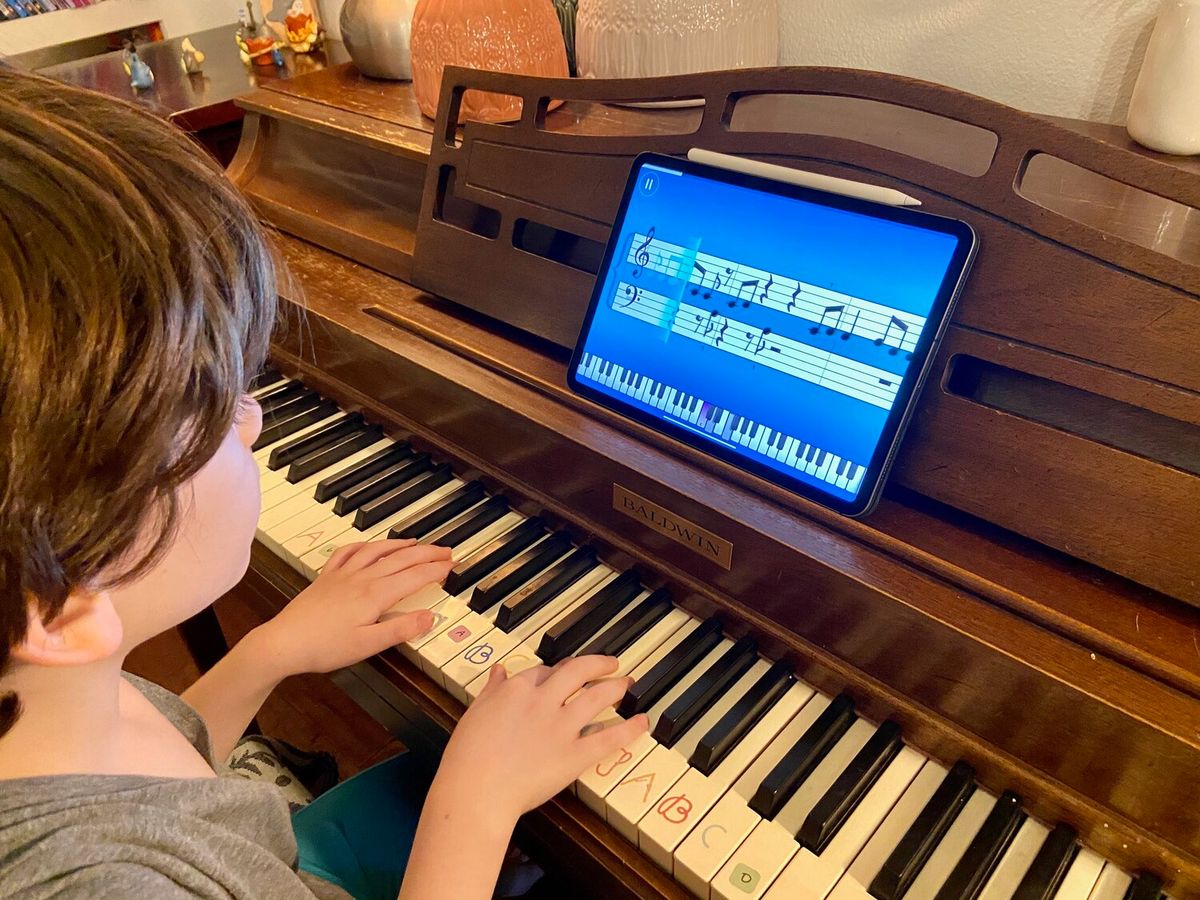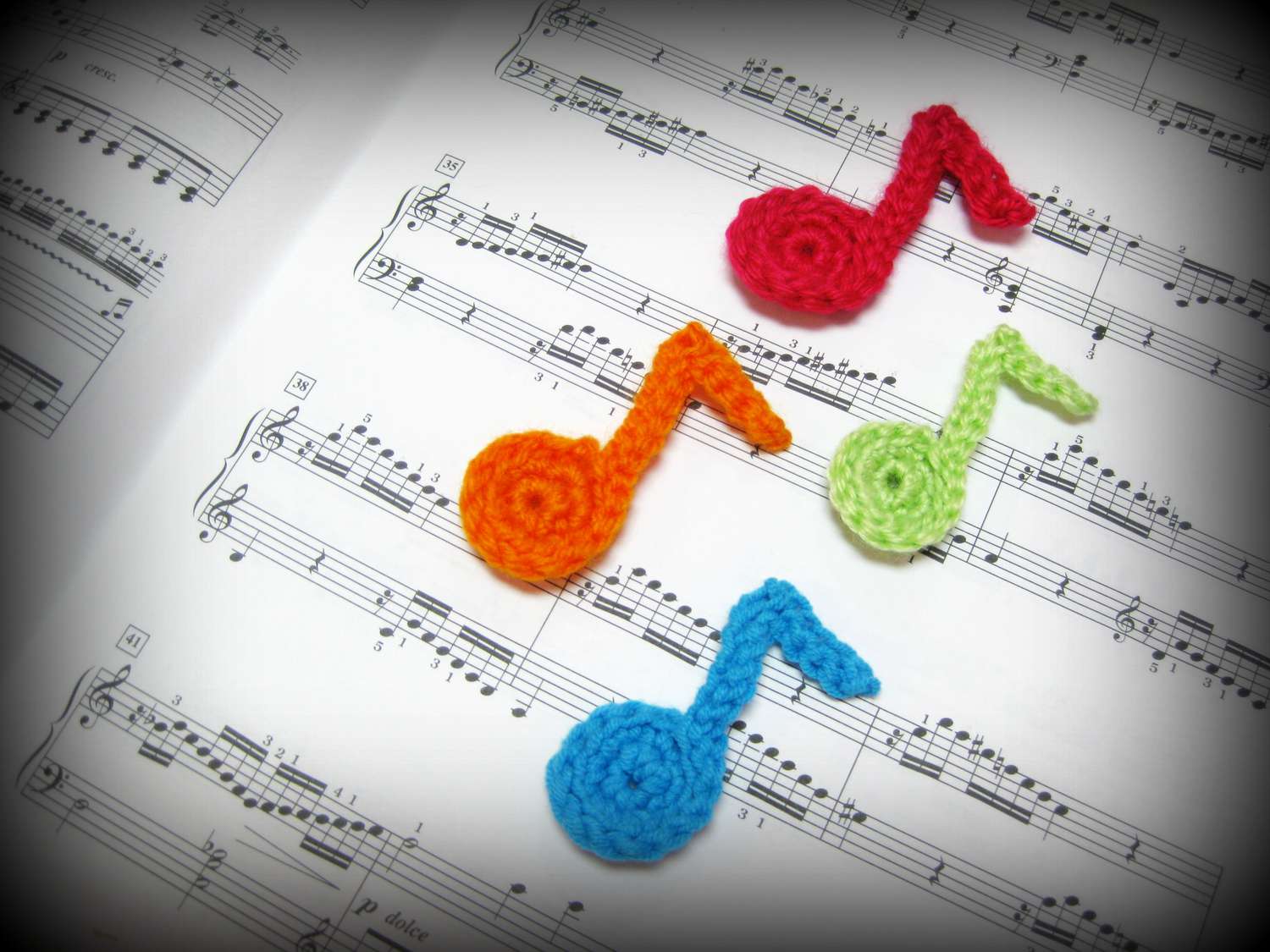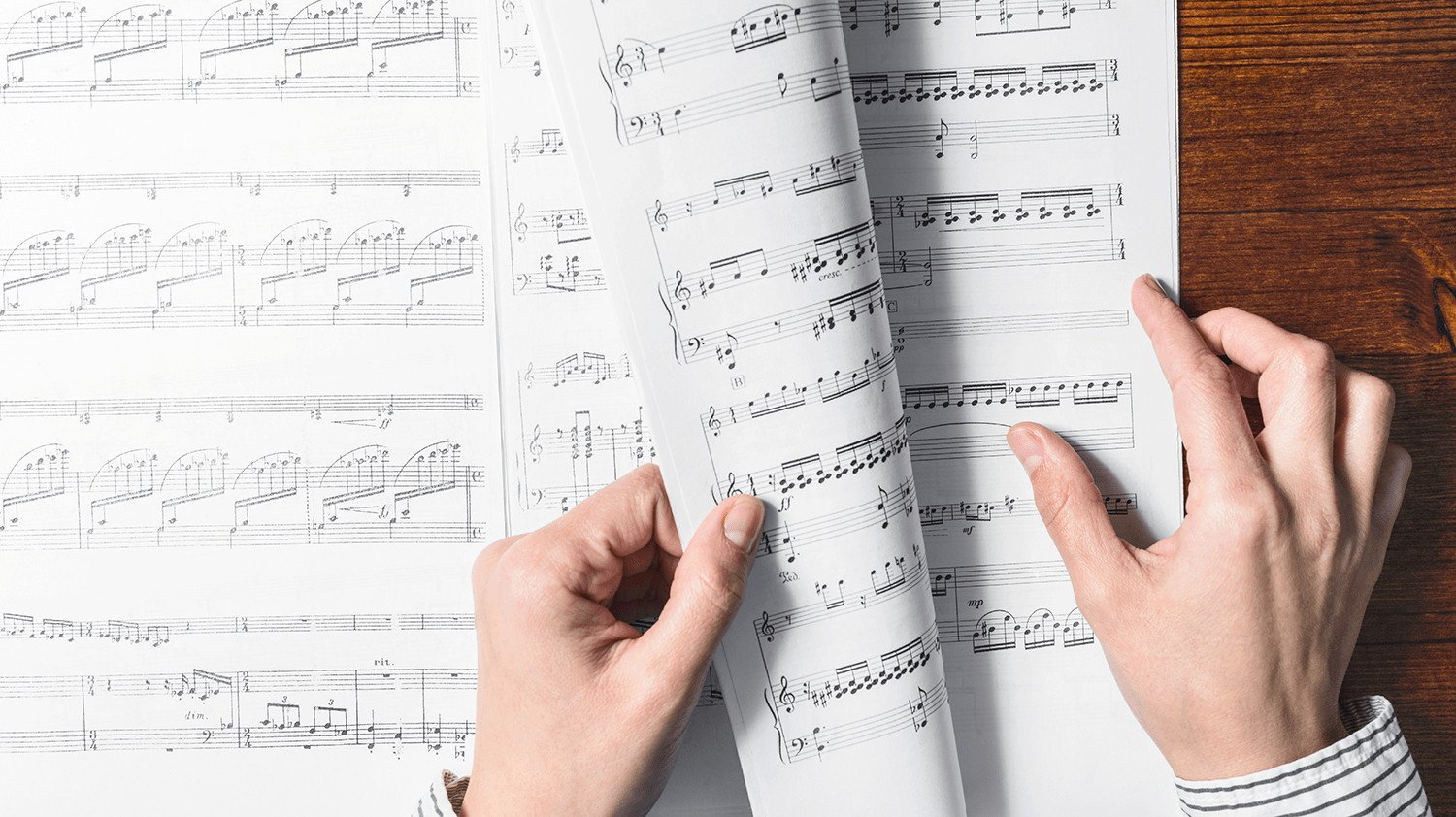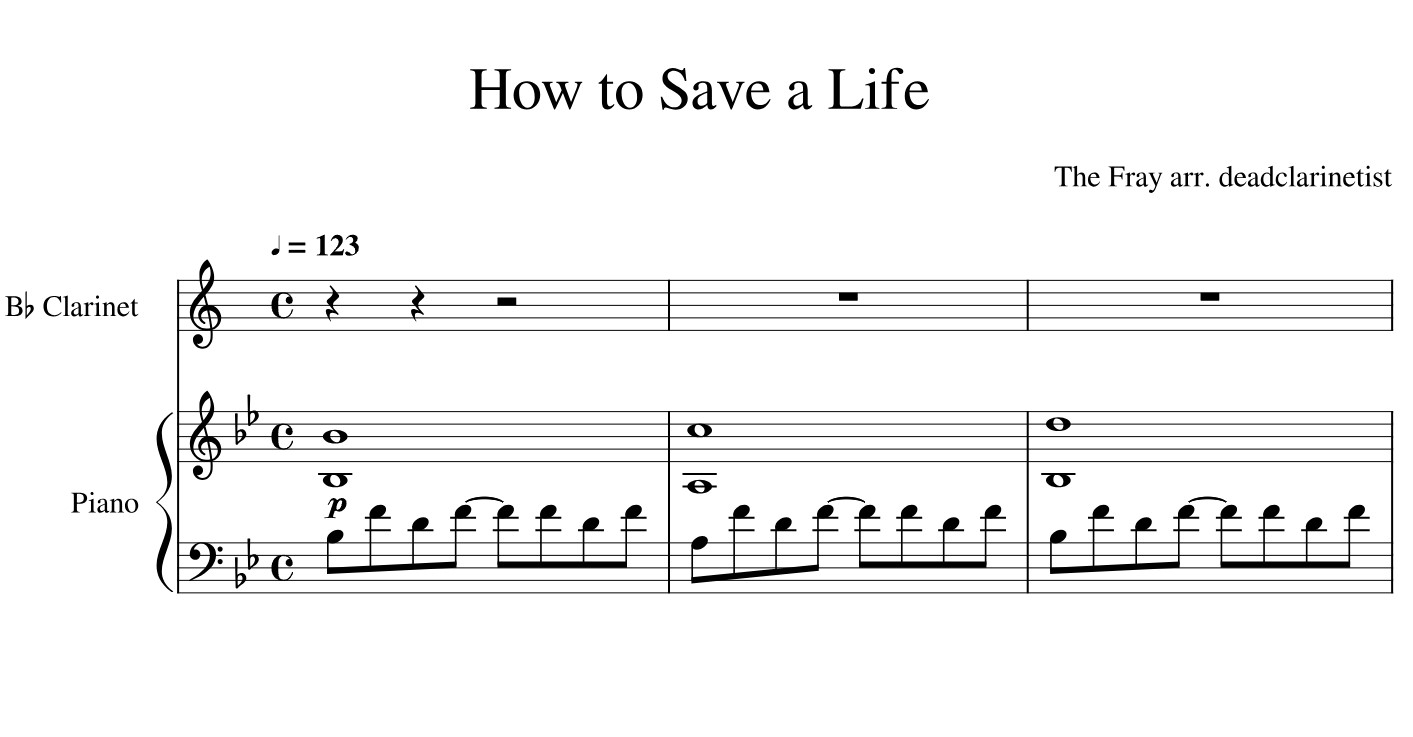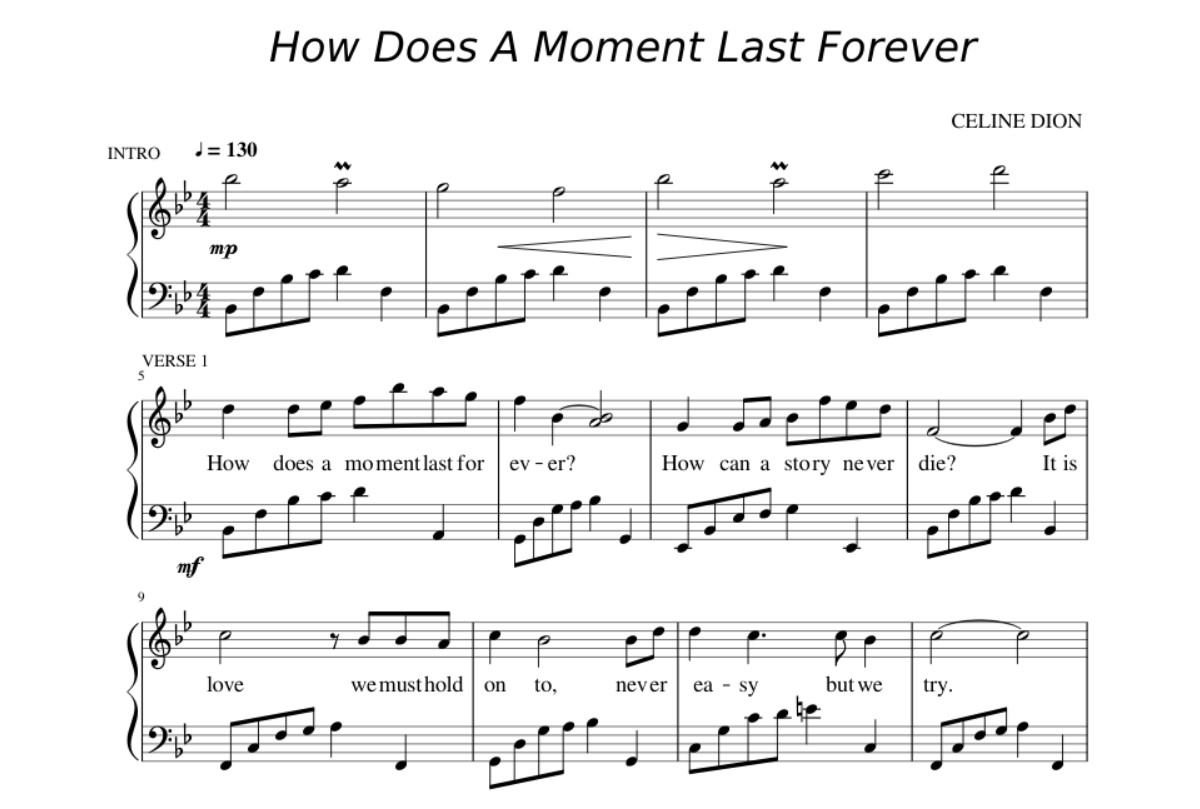Home>Production & Technology>Sheet Music>How To Write Piano Sheet Music


Sheet Music
How To Write Piano Sheet Music
Modified: January 22, 2024
Learn how to write piano sheet music with our comprehensive guide. From notation symbols to composing techniques, create beautiful melodies with ease.
(Many of the links in this article redirect to a specific reviewed product. Your purchase of these products through affiliate links helps to generate commission for AudioLover.com, at no extra cost. Learn more)
Table of Contents
Introduction
Sheet music is a written form of musical notation that allows musicians to understand and perform a piece of music. It serves as a universal language that enables communication between composers, arrangers, and performers. For piano players, having the ability to write their own sheet music can be an invaluable skill.
Creating piano sheet music not only allows musicians to document their compositions but also provides a means to share their music with others. Whether you’re a composer looking to bring your musical ideas to life or a teacher wanting to create customized arrangements for your students, knowing how to write piano sheet music is essential.
In this article, we will delve into the fundamentals of writing piano sheet music, covering everything from understanding the basics of music notation to finalizing and formatting your compositions. By the end, you will have a solid foundation and be well-equipped to put your musical ideas onto paper.
Before diving into the technical aspects, it’s important to note that sheet music is a flexible and creative medium. While it adheres to certain guidelines and conventions, there is still room for personal expression. As you embark on your journey of writing piano sheet music, don’t be afraid to let your creativity shine through and experiment with different musical elements.
Now, let’s begin our exploration of how to write piano sheet music by understanding the basics of music notation.
Understanding the Basics of Music Notation
Music notation is a system of symbols and markings that represent the pitch, duration, and other musical elements of a composition. To write piano sheet music effectively, it is crucial to have a solid understanding of the basics of music notation.
The staff is the foundation of music notation. It consists of horizontal lines and spaces that represent different pitches. The lines and spaces are numbered from bottom to top, with letters representing the pitches. For piano sheet music, two staffs are typically used – the treble clef (for the right hand) and the bass clef (for the left hand).
Notes are the primary symbols used to represent pitch. Each note is placed on a specific line or space on the staff and is represented by an oval shape filled with either an open or solid note head. The position of the note on the staff determines its pitch – higher notes are placed on higher lines or spaces, while lower notes are placed on lower lines or spaces.
In addition to notes, other symbols are used in music notation to indicate the duration and timing of the notes. The most common symbol is the time signature, which consists of two numbers placed at the beginning of the staff. The top number represents the number of beats per measure, while the bottom number denotes the type of note that receives one beat (e.g., a quarter note or a half note).
Rests are also important in music notation as they indicate periods of silence. Just like notes, rests have different durations and correspond to different values. They are represented by symbols that are similar in shape to the notes but are placed in different positions on the staff.
Understanding dynamics and articulation markings is another crucial aspect of music notation. Dynamics indicate the volume of the music, while articulation markings depict how the notes are to be played (e.g., legato, staccato). These markings are placed above, below, or next to the notes and can greatly enhance the expressivity and interpretation of the music.
In summary, developing a solid foundation in music notation is essential for writing piano sheet music. Familiarize yourself with the staff, notes, time signatures, rests, dynamics, and articulation markings. By understanding these basics, you will be able to accurately represent your musical ideas on paper and communicate them effectively to others.
Choosing the Right Key and Time Signature
When writing piano sheet music, choosing the right key and time signature is crucial as it sets the foundation for the entire composition. The key determines the tonality of the piece, while the time signature establishes the rhythmic framework.
The key of a composition determines the overall pitch center and tonality. It influences the mood and character of the music. The most commonly used keys in piano music are C major and A minor, as they consist of all the white keys and are considered neutral tonalities. However, don’t limit yourself to these keys – explore different key signatures to find the one that best suits the emotion and expression you want to convey in your piece.
When selecting the key, consider the technical capabilities of the pianist who will be playing the piece. Certain keys require more complex fingerings or hand movements, so it’s important to strike a balance between creating a captivating composition and ensuring it is playable.
Next, the time signature establishes the rhythmic structure of the composition. It indicates how many beats are in each measure and which note value corresponds to one beat. The most common time signature in piano sheet music is 4/4, also known as common time, which means there are four beats per measure and a quarter note receives one beat.
However, don’t be afraid to explore different time signatures to add variety and interest to your compositions. 3/4 time signature, also known as waltz time, is frequently used to create a flowing and elegant feel. 6/8 time signature, also known as compound duple time, is often associated with a lively and dance-like quality. Experiment with different time signatures to find the one that enhances the overall rhythmic character of your piece.
Consider the tempo of your composition when choosing the time signature. A faster tempo may be better suited to a time signature with a higher number of beats per measure, while a slower tempo may benefit from a time signature with a lower number of beats per measure.
Ultimately, the key and time signature you choose should support the overall mood and intention of your composition. Experiment, be creative, and don’t be afraid to step outside of traditional conventions to create a unique and captivating piece of piano music.
Writing Melodies for Piano
The melody is the heart and soul of a composition. It is the part that listeners often remember and hum along to. When writing melodies for piano, there are several key considerations to keep in mind in order to create memorable and engaging musical lines.
Firstly, it’s important to understand the range of the piano. The piano has a wide range with 88 keys, and utilizing the full range can add depth and variety to your melody. Consider using the higher register for more delicate and expressive passages and the lower register for stronger and more impactful moments.
Melodies should be clear and singable. Aim for simplicity and avoid overly complex or convoluted lines that may be difficult for both the performer and listener to follow. Focus on creating memorable motifs and phrases that have a clear sense of direction and flow.
Rhythmic variation is another important element. Experiment with different patterns of long and short notes, syncopation, and rests to create interest and add rhythmic energy to your melody. Incorporating different note values and rests can also create a sense of tension and release in your composition.
Consider the use of repetition and variation in your melodies. Repetition creates familiarity and can help anchor the listener’s attention, while variation adds interest and prevents the melody from becoming repetitive or predictable. Explore different ways to vary your melody, such as changing the rhythm, adding embellishments, or transposing it to a different register.
Harmonic progression is another aspect to consider when writing melodies for piano. The harmony provides the support and context for the melody, so it’s important to ensure that the two elements complement each other. Experiment with different chord progressions and inversions to create harmonic tension and resolution that enhance the emotional impact of your melody.
Lastly, don’t be afraid to let your creativity shine through. Immerse yourself in a variety of musical styles and genres to draw inspiration from. Experiment with different moods, tonalities, and styles to create unique and captivating melodies that reflect your musical personality.
Remember, writing melodies for piano is an art form that requires both technical skill and creative expression. Embrace the process of exploration and refinement, and let your musical ideas flow freely as you compose melodies that evoke emotion and captivate listeners.
Adding Harmony and Chords
Harmony and chords play a vital role in enriching piano compositions and adding depth to the overall sound. By incorporating harmonies and chords into your piano sheet music, you can create a fuller and more expressive musical experience.
Harmony refers to the combination of different pitches played simultaneously to support the melody. It creates a sense of tension and release and adds color and movement to the composition. When adding harmony to your piano sheet music, there are a few essential concepts to consider.
The first step is to identify the key of your composition. The key determines the set of chords that will harmonize with the melody. Each key has a corresponding set of chords known as the diatonic chords. These chords are derived from the scale of the key and include major, minor, and diminished chords.
Begin by selecting chords that naturally harmonize with the melody. For example, if your melody is in the key of C major, commonly used chords that could harmonize with it include C major, F major, and G major. Experiment with different chord progressions and inversions to create a pleasing and cohesive harmonic flow.
Chords can be played in various positions and voicings to create different textures and timbres. Try different inversions and spread the notes across the piano to achieve a desired sound. This way, you can create smooth voice leading and avoid large leaps between chords, resulting in a more coherent and pleasing harmonic progression.
Consider adding non-chord tones and passing tones to add melodic interest and tension to your harmony. These notes, which are not part of the underlying chord, can create a sense of movement and add complexity to the composition.
Another important consideration is the rhythm of the chords. Experiment with different rhythmic patterns and syncopation to create a dynamic interplay between the melody and the accompanying chords. This can enhance the rhythmic energy and groove of the composition.
Additionally, understanding chord embellishments and extensions can further elevate the harmonic complexity of your piano sheet music. Seventh chords, suspended chords, and extended chords can be utilized to create unique and expressive harmonic textures.
Keep in mind that the harmonic choices you make should support the overall mood and emotion of the piece. Consider the desired impact of each chord progression and how it complements the melody. The harmony should enhance and highlight the emotional intention of the composition.
Overall, adding harmony and chords to your piano sheet music is an opportunity to create a rich and nuanced musical experience. By choosing the appropriate chords, experimenting with voicings and rhythmic patterns, and considering the overall emotional impact, you can create a beautifully harmonized composition that engages and captivates the listener.
Incorporating Rhythm and Tempo
Rhythm and tempo are integral elements in music that bring life and energy to piano compositions. By carefully considering and incorporating rhythm and tempo, you can create a compelling and engaging musical experience.
Rhythm refers to the pattern of durations and accents in music. It is the driving force that propels the composition forward and provides a sense of groove and momentum. When writing piano sheet music, there are several aspects of rhythm to focus on:
Duration: Experiment with different note values and rests to create rhythmic variation in your composition. Utilize quarter notes, eighth notes, and other note durations to add interest and create a sense of movement and flow.
Syncopation: Add syncopated rhythms by accenting offbeat notes or placing notes in unexpected places. Syncopation can create a lively and rhythmic tension that adds excitement and interest to your piano composition.
Phrasing: Pay attention to the phrasing of your melody and chords. Divide your composition into musical phrases, allowing for natural breathing points and pauses. This helps create a cohesive and expressive flow in your music.
Repetition and variation: Use rhythmic repetition or variation to add interest and structure to your composition. Repeating rhythmic patterns or subtly changing them can create a sense of familiarity or surprise, respectively.
Tempo, on the other hand, refers to the speed at which a composition is performed. It sets the overall mood and energy of the music. When selecting the tempo for your piano composition, consider the emotional intent and character of the piece. A faster tempo can convey excitement and energy, while a slower tempo may evoke a sense of melancholy or reflection.
Within the composition, you may also include tempo changes or tempo markings, such as “ritardando” (gradually getting slower) or “accelerando” (gradually getting faster), to add expressiveness and shape to your music. These changes can help emphasize certain musical moments or create a sense of tension and release.
When incorporating rhythm and tempo into your piano sheet music, it’s important to strike a balance between complexity and accessibility. While intricate rhythms and faster tempos can add excitement, ensure that they are still playable and manageable for the performer.
Additionally, consider the relationship between rhythm, tempo, and the other musical elements in the composition, such as melody, harmony, and dynamics. A well-balanced interplay between these elements creates a cohesive and unified musical experience.
Remember, rhythm and tempo are powerful tools that can infuse your piano compositions with energy, emotion, and personality. By carefully considering and incorporating them, you can create captivating and engaging music that resonates with both performers and listeners.
Applying Dynamics and Articulation
Dynamics and articulation are essential elements that bring expression and nuance to piano compositions. By skillfully applying dynamics and articulation markings, you can elevate your piano sheet music and create a more captivating and emotionally engaging musical experience.
Dynamics in music refer to the variation in volume or intensity. They add depth and contrast, allowing certain musical moments to stand out and creating a sense of tension and release. When applying dynamics to your piano composition, consider the following:
Fortissimo (ff) indicates playing very loudly and commanding attention. This dynamic marking is often used to emphasize climactic moments and create a strong impact.
Forte (f) signifies playing loudly and boldly. It adds strength and power to a specific musical passage, while still allowing for dynamic variations within the piece.
Mezzo Forte (mf) indicates playing moderately loud. It brings a sense of intensity and expression to the music without overpowering other musical elements.
Mezzo Piano (mp) signifies playing moderately soft. It adds a gentle and delicate touch to the music, creating a sense of intimacy and sensitivity.
Piano (p) indicates playing softly. It evokes a calm and gentle atmosphere, allowing for subtle nuances and delicate phrasing.
Pianissimo (pp) signifies playing very softly. This dynamic marking creates a whisper-like quality and can add a sense of mystery and introspection to the music.
Articulation refers to how the notes are played and connected. It enhances the clarity, rhythm, and overall expression of the music. When applying articulation markings to your piano composition, consider the following techniques:
Legato indicates playing smoothly and connecting the notes. This creates a flowing and seamless sound, achieved by smoothly lifting and connecting the fingers between the notes.
Staccato signifies playing crisply and distinctly, with a brief separation between the notes. It adds a sense of lightness and agility to the music.
Accents are used to emphasize certain notes by playing them with slightly more force or emphasis. Accents can help highlight specific moments or create a more dynamic and expressive performance.
Slurs indicate playing multiple notes under the same bow or breath, without interruption. In piano music, slurs are used to connect notes fluidly and are often combined with legato markings.
Consider the musical context and the overall character of your composition when applying dynamics and articulation. Experiment with different combinations and variations to bring out the desired emotions and phrasing. Use these markings to accentuate the musical peaks and valleys, enhancing the overall narrative of your piano piece.
Remember to notate the dynamics and articulation meticulously in your piano sheet music, ensuring that they are clear and easily deciphered by the performer. Thoughtful and precise markings will guide the performer in interpreting your composition and delivering a more expressive and engaging performance.
Creating Piano Accompaniment
Piano accompaniment provides depth and support to a composition, enhancing the overall musical experience. Whether accompanying a vocalist, instrumentalist, or even another piano part, creating a well-crafted piano accompaniment can greatly enrich your piano sheet music.
When crafting a piano accompaniment, it’s important to strike a balance between supporting the main melody or instrument and adding interest and musicality to the background. Here are some tips to help you create an effective piano accompaniment:
Listen and observe: Take the time to listen carefully to the melody or main instrument, and observe the musical phrasing, dynamics, and rhythms. This will help you determine where to place your accompaniment and how to complement the lead melody or instrument.
Consider the harmonic function: The piano accompaniment should provide a solid harmonic foundation. Identify the key and chord progressions of the composition and choose appropriate chord voicings and inversions to support the melody or main instrument.
Explore various accompaniment patterns: Experiment with different rhythmic patterns and arpeggios to add texture and rhythmic interest to your accompaniment. Simple block chords, broken chords, Alberti bass patterns, or octave pulsing are just a few examples of accompaniment patterns you can incorporate.
Use dynamics and articulation: Just as dynamics and articulation enhance the main melody, applying these elements to the piano accompaniment can create a more nuanced and expressive performance. Use the full range of dynamics, from pianissimo to fortissimo, and consider incorporating legato, staccato, and accent markings to add color and depth.
Interact with the melody or main instrument: The piano accompaniment can engage in a musical dialogue with the melody or main instrument. Explore counter melodies, call and response phrases, and rhythmic interplay to create a compelling and interactive accompaniment.
Experiment with stylistic elements: Consider the genre or style of the composition and infuse your piano accompaniment with appropriate stylistic elements. For example, in jazz or blues, you can incorporate syncopation and improvisation, while in classical or romantic music, you can focus on expressive phrasing and dynamic contrast.
Remember, the piano accompaniment is an integral part of the overall composition. It should enhance the musical experience without overpowering or distracting from the main melody or instrument. Take the time to refine and polish your accompaniment, ensuring that it complements the composition and adds depth and richness to the overall sound.
By carefully crafting your piano accompaniment, you can create a compelling and immersive musical journey that captivates performers and listeners alike.
Finalizing and Formatting the Piano Sheet Music
Once you have composed your piano piece and incorporated all the necessary musical elements, it’s time to finalize and format your piano sheet music. Paying attention to the details of presentation is vital to ensure clear communication and ease of interpretation for the performer. Here are some key steps to consider when finalizing and formatting your piano sheet music:
Clean and clear notation: Ensure that your notation is neat, legible, and free of errors. Use appropriate spacing between notes, chords, and measures, and align all musical elements properly. Consistency in notation contributes to the professional appearance of your sheet music.
Layout and page turns: Organize your sheet music into logical sections and pages, considering the natural flow of the music and convenient page turns for the performer. Avoid placing page turns in crucial musical moments and indicate clear instructions for page turns, such as “turn page” or “continue from the next page.”
Dynamic and articulation markings: Review all your dynamic and articulation markings to ensure they are accurately placed and clearly indicated. Use appropriate symbols, such as crescendo and decrescendo markings, accents, staccato dots, slurs, and other expressive notations, to guide the performer in interpreting your music.
Titles and headings: Include a suitable title for your composition at the top of the sheet music. Additionally, add section headings if your piece consists of distinct sections. Headings help the performer navigate the music and provide a clear structure to the composition.
Expression and performance directions: Incorporate performance instructions and expression markings to guide the performer in capturing the desired mood and style of your composition. These instructions may include tempo indications, pedal markings, phrasing suggestions, and any specific interpretative guidance you wish to convey.
Bar numbers and measure lines: Numbering the measures in your sheet music can assist in rehearsal and communication during collaborative performances or discussions. Ensure that the measure lines are clearly visible, helping the performer track their progress through the music.
Additional notations: Consider adding any extra notations that may be relevant to your composition. This could include fingerings, alternate chord voicings, or ornaments that provide further insight and support to the performer.
Proper page and system breaks: Verify that your sheet music has appropriate page breaks and system breaks to prevent overcrowding and make the music easier to read. This ensures a smooth and flowing presentation, allowing the performer to follow the music effortlessly.
Proofread: Before finalizing your sheet music, carefully proofread the entire composition to identify any mistakes or inconsistencies. Check for errors in notation, key signatures, time signatures, chord symbols, and any other musical elements.
By finalizing and formatting your piano sheet music with meticulous attention to detail, you will produce a professional and user-friendly document that facilitates an accurate and expressive performance. Remember, clear and well-prepared sheet music not only enhances the experience for the performer but also reflects the dedication and care you have put into your composition.
Conclusion
Writing piano sheet music is a rewarding endeavor that allows you to bring your musical ideas to life, share your compositions with others, and leave a lasting musical legacy. Throughout this article, we have explored the essential elements and techniques involved in creating comprehensive and engaging piano sheet music.
Understanding the basics of music notation, such as the staff, notes, time signatures, rests, dynamics, and articulation markings, provides a solid foundation for accurately representing your musical ideas on paper. Choosing the right key and time signature sets the tone and establishes the framework of your composition.
Writing melodies for piano involves crafting memorable and expressive musical lines, considering the range of the instrument, exploring rhythmic variation, and incorporating repetition and variation. Adding harmony and chords enhances the depth and support of your composition, requiring a keen sense of harmonic progression and the ability to create harmonic tension and resolution.
Incorporating rhythm and tempo infuses energy and emotion into your piano compositions, while applying dynamics and articulation adds expression and nuance. Crafting a well-crafted piano accompaniment provides depth and support to the main melody or instrument, enhancing the overall musical experience.
Finally, finalizing and formatting your piano sheet music ensures clarity, legibility, and ease of interpretation for performers. Attention to details such as clean notation, logical layout, clear dynamic and articulation markings, proper titles and headings, and accurate performance directions contribute to a professional and polished presentation.
Remember, writing piano sheet music is both an art and a skill. Embrace your creativity, experiment with various musical elements, and let your personality shine through in your compositions. With practice and dedication, you will develop your own unique style and create piano sheet music that captivates performers and audiences alike.
So, grab your pen and paper, or sit down at your computer, and let your musical ideas flow. Write piano sheet music that tells a story, evokes emotions, and connects people through the universal language of music. The possibilities are endless, and the world is waiting to hear your compositions.

